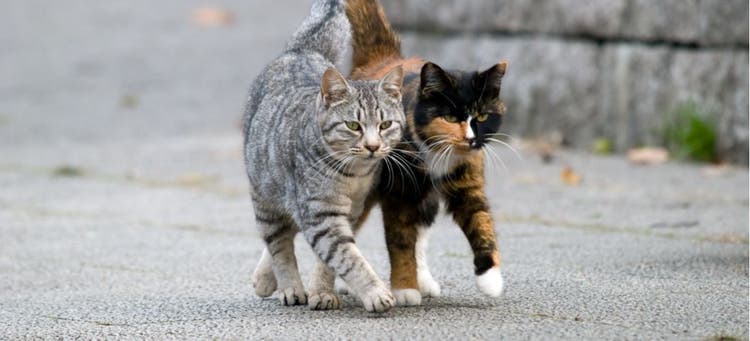
How to Handle Feral Cats
If you’re a feline fanatic, you’d probably adopt just about any cat. Unfortunately, adoption isn’t an option for every cat you might spot wandering on their own. Feral animals are best left to themselves, but that doesn’t mean you can’t offer help.
Feral Cats vs. Stray Cats
Stray cats are former pets who’ve become lost or been abandoned by their families. They are, however, still comfortable enough with human contact to be safely adopted. Feral cats, on the other hand, are the children of other strays or feral felines. They are not used to spending time around people and generally don’t make good candidates for adoption. Life for a feral cat tends to be tough and short. Most manage to live for just a few years on their own.
Why Are Feral Cats Considered a Problem?
The feral cat community raises many concerns for the general public. What’s more, because just two to three percent of the country’s millions of feral cats are spayed and neutered, wandering communities of cats represent a growing issue. The Humane Society of the United States estimates that feral and stray felines account for around 80% of the kittens born in the U.S. each year.
The rising number of feral cats burdens shelters all over the country with unmanageable populations, leading institutions to euthanize more than 850,000 cats each year. They can also be disruptive and destructive, engaging in noisy fights, transmitting fleas, and marking their territory in inappropriate spots like porches and gardens.
Trap-Neuter-Return (TNR) Programs: Humanely Managing Feral Cat Communities
Trap-Neuter-Return (TNR) programs are one popular method for safely and humanely managing feral cat communities. Offering food and water to feral cats helps, but having community members spayed or neutered will ensure population numbers never grow out of control.
These programs typically involve:
- Trapping cats in a humane way.
- Having cats spayed or neutered.
- Vaccinating cats against rabies.
- “Tipping” one ear by surgically removing a piece. This is a recognized signal that shows a cat has been spayed or neutered.
- Returning cats to their feral communities.
Critics of TNR programs maintain that neutering a cat only to return them to a feral community constitutes abandonment. Those critics are likely outnumbered, however. The American Society for the Prevention of Cruelty to Animals (ASPCA) and the Humane Society are among the most prominent of the many TNR proponents.
Benefits of TNR Programs
- For Cats: Spaying and neutering can reduce the risks of certain health conditions like cancer of the breast, testicles, and uterus. Spayed female cats will also avoid the various health risks associated with pregnancy.
- For People: In addition to stopping cats from reproducing, spaying and neutering helps discourage certain behaviors like spraying and fighting that make feral cat communities a nuisance.
How to Help
Though adoption isn’t an option for most feral cats, there’s plenty that concerned cat lovers can do to help feral cats in their community and around the country.
Avoid Contributing to the Problem
Spaying and neutering your own cats is the best and easiest way to ensure you don’t wind up contributing to feral cat populations and overcrowding in animal shelters. Healthy cats can undergo spaying or neutering when they’re as young as eight weeks old. Experts advise having the procedures done before pets reach five months of age. Make sure to keep an eye on outdoor cats. Even spayed or neutered cats can become part of feral cat colonies and get separated from their owners.
Donate Time or Money
If you see feral cats in your area, contact local shelters and animal advocacy groups to learn more about how you can support their TNR efforts. Spaying and neutering often costs shelters as little as $20, so a small donation could go a long way. Extra hands help too. Consider volunteering through community outreach or offering on-site assistance.
Spread the Word
Offer advice to your cat-owning friends about ways to keep pets safe and methods for safely handling feral cats. In time, you’ll build a community of passionate cat advocates.